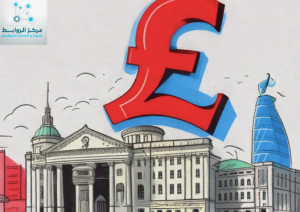
By: Shatha Kalel
The inflation rate in the United Kingdom reached 3.4% in May 2025, according to the latest Consumer Price Index (CPI) data. While this marks a significant decline from its peak of 11.1% in October 2022, it remains above the Bank of England’s 2% target, largely due to persistently high food prices, including chocolate and dairy products.
Although core inflation – which excludes volatile food and energy prices – has slightly decreased to 3.5%, this minor decline only indicates a slow return to financial stability. The continued upward pressure on prices reflects deeper challenges such as supply chain disruptions, ongoing energy costs, and a relatively strong labor market.
Monetary Policy Response: Interest Rates and Their Impact
In response to the inflation crisis, the Bank of England raised interest rates aggressively, reaching 5.25% by mid-2023. Since then, it has gradually reduced rates, with four cuts since August 2024, bringing the rate down to 4.25% as of May 2025.
This move reflects an attempt to balance controlling inflation with stimulating economic growth. Raising interest rates is intended to curb demand by making borrowing more expensive, which reduces consumer spending and business investment. However, this also leads to higher mortgage and loan costs, placing additional pressure on households and companies.
In June 2025, the Bank decided to pause further rate cuts for the time being, awaiting clearer economic indicators. Bank of England Governor Andrew Bailey hinted at the possibility of additional “gradual and cautious” rate reductions, potentially starting in August, depending on global economic developments.
The Impact of Inflation on the UK Economy
Persistently high inflation continues to erode purchasing power, even though wage growth – particularly in the private sector – is currently outpacing inflation. Between February and April 2025, real wages increased by 2.1%, providing some relief to workers.
However, the continued rise in prices, especially for essentials such as food and energy, still puts significant strain on low-income households. Businesses are also facing higher operating costs, which could lead to reduced hiring, lower investment, or even layoffs in some sectors.
Furthermore, geopolitical instability – including US tariffs and energy market volatility – adds additional challenges and has prompted the Bank of England to lower its inflation forecasts for the second half of 2025.
Impacts on the Global Economy
The UK’s inflation and interest rate trends carry global significance due to its prominent economic position. The key effects include:
Investor Movements: Changes in UK interest rates affect international capital flows. High rates tend to attract foreign investment and strengthen the pound sterling, while rate cuts could weaken the currency and increase import costs.
Global Supply Chains: The UK plays a vital role in global supply chains, especially in sectors like finance, technology, and pharmaceuticals. Long-term economic disruptions in the UK could have ripple effects on international trade.
Global Inflation Comparisons:
Eurozone: Inflation stood at 2.2% in April 2025. The European Central Bank reduced interest rates to 2% after multiple cuts.
United States: Inflation rose slightly to 2.4% in May and remains above the Federal Reserve’s 2% target. In June 2025, the Fed held interest rates steady at 4.25%–4.5% for the fourth consecutive meeting, despite political pressure from President Trump to lower them further.
As the UK, US, and Europe move towards synchronized monetary easing, the global economy may see a demand rebound in late 2025 or early 2026.
Conclusion: What Can We Expect?
The UK remains in a recovery phase following the inflation crisis of 2022–2023. Despite a sharp drop from record highs, inflation is still above target, and interest rates remain at historically elevated levels.
The UK plays a critical role in shaping global economic trends through investor confidence, currency movements, and market stability. The coming months will require careful coordination among central banks worldwide, especially if geopolitical tensions or energy price fluctuations trigger another round of inflationary pressures.
Thus, 2025 remains a year of cautious optimism, characterized by slowing recovery and multiple economic challenges.
Economic Studies Unit / North America Office
Al-Rabetat Center for Research and Strategic Studies
